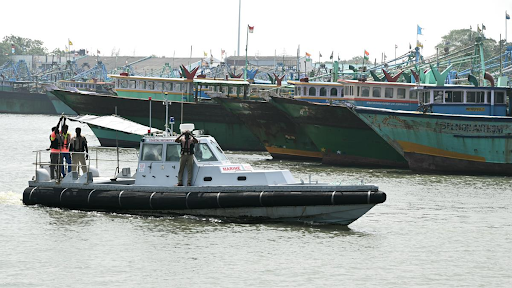




Disclaimer: Copyright infringement not intended.
Defence Research and Development Organisation (DRDO) conducted a successful flight-trial of India’s first long-range hypersonic missile from Dr APJ Abdul Kalam Island off the coast of Odisha.
Definition |
Fast, low-flying, and highly maneuverable weapons designed to evade traditional missile defense systems |
Trajectory |
Unlike ballistic missiles, they do not follow a predetermined, arched trajectory and can maneuver en route to their destination |
Speed |
Hypersonic: Faster than Mach 5 (five times the speed of sound, approximately 6,100 km/h); Supersonic: Between Mach 1 and Mach 5 (approximately 1,220 to 6,100 km/h) |
Ionization |
At hypersonic speeds, air molecules around the vehicle change, leading to ionization, which subjects the missile to tremendous stresses |
Types of Hypersonic Weapons |
Hypersonic Glide Vehicles (HGV): Launched from a rocket before gliding to the target Hypersonic Cruise Missiles (HCM): Powered by scramjet engines after acquiring the target |
Advantages |
Responsive Strike: Effective against distant, defended, or time-sensitive threats when other forces are unavailable Conventional Use: Rely on kinetic energy, effective against unhardened targets or underground facilities Detection Challenges: Fly at lower altitudes than ballistic missiles, complicating tracking by surface-based sensors |
Engineering Challenges |
Heat and Air Resistance: Extreme speeds generate significant heat due to friction Precision Maneuverability: Demands exceptional precision Communication Difficulties: Maintaining connectivity during flight High Costs: Development costs are higher compared to ballistic missiles |
Global Leaders in Hypersonic Tech |
Russia and China: Leading in development, with Russia deploying systems like Kinzhal in Ukraine United States: Advancing with programs like the Long-Range Hypersonic Weapon (LRHW), with a $756 million contract awarded to Lockheed Martin in 2024 |
Other Nations Pursuing Hypersonic Tech |
France, Germany, Australia, Japan, Iran, Israel |
India's Journey in Hypersonic Technology |
Initial Challenges: Failed 2019 test of the Hypersonic Technology Demonstrator Vehicle (HSTDV) Milestone: Success in 2020 with a scramjet-powered vehicle achieving Mach 6 for 22 to 23 seconds Future Plans: Trials for longer duration and higher reliability before deployment |
|
Genesis |
Builds upon DRDO’s Hypersonic Technology Demonstrator Vehicle (HSTDV) program (It is intended to attain autonomous scramjet flight for 20 seconds, using a solid rocket launch booster). |
|
Range |
Over 1500 km |
|
Speed |
Mach 6 (Six times the speed of sound) |
|
Mid-Flight Maneuverability |
Combines the speed of a ballistic missile with the agility of mid-flight movements like a cruise missile to bypass defenses |
|
Advanced Tracking |
Utilizes advanced multi-domain monitoring systems for precise targeting |
|
Multi-Payload Capability |
Capable of carrying both conventional and nuclear warheads |
|
Applications |
Usable across the Army, Navy, and Air Force. The naval version (under development) is designed to target and destroy enemy warships at long distances |
It is an agency under the Department of Defence Research and Development in Ministry of Defence of the Government of India, charged with the military's research and development, headquartered in Delhi, India. It was formed in 1958 by the merger of the Technical Development Establishment and the Directorate of Technical Development and Production of the Indian Ordnance Factories with the Defence Science Organisation under the administration of Jawaharlal Nehru.
READ ABOUT
INDIAN MISSILES: AN OVERVIEW UPSC
GPI programme |Hypersonic Missile
Source:
|
PRACTICE QUESTION Q.Discuss the significance of India’s development of hypersonic missile technology in enhancing its defense capabilities. Highlight the challenges associated with its development and the implications for regional and global security. (250 words) |





© 2025 iasgyan. All right reserved